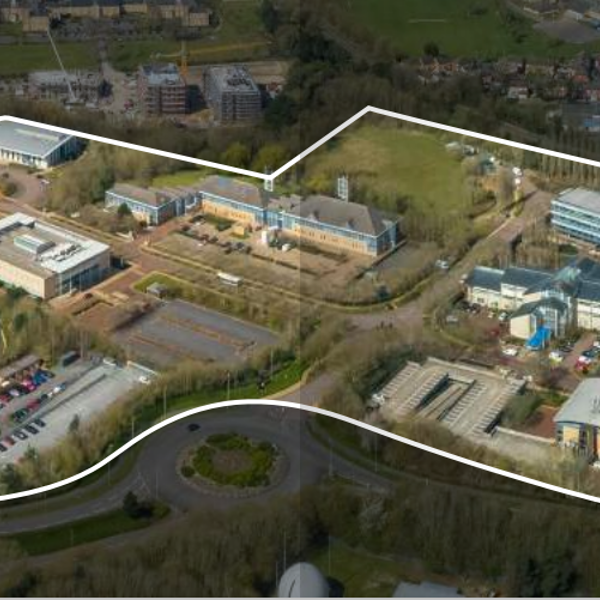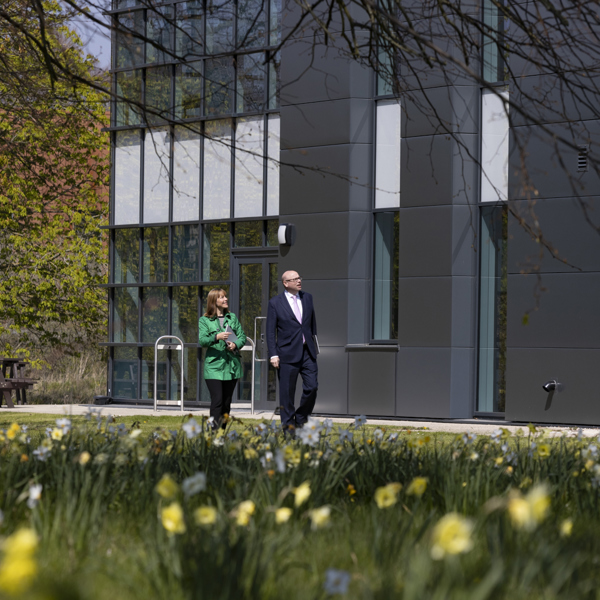Investing in Life Sciences Real Estate: Value
Life sciences is a relatively new and still niche real estate investment sector. These assets offer large, profitable returns, while diversifying portfolios. The sector ticks many boxes on an investor’s shortlist, but understanding the factors that most influence value is crucial.
LOCATION. If you build or refurbish the right property in an established science and tech cluster, it will let well.
Occupiers often want to secure accommodation on particular science parks, or city locations, to collaborate easily and freely with their chosen life sciences community, or academic centre of excellence. Rent is not the key driver – access to the science ecosystem of clinicians, graduates, researchers and the patients is fundamental.
The Oxford-Cambridge Arc has the strongest concentration of life sciences real estate in Europe. The Arc has established a critical mass which is gaining momentum, with the core science, technology and engineering locations of Oxford, Cambridge and Milton Keynes reinvigorating the wider region.
But in Oxford and Cambridge, the availability of existing buildings is low and the potential for new supply is restricted because land supply is tightly controlled by the Local Planning Authorities.

''Investor profitability can be enhanced with exemplary asset and property management. We are involved with in excess of 7.5M sq ft of Science and Tech space whether by way of managing an estate or buildings or both'' - David Brown, Investment and Property Management
SECURITY OF INCOME. Blue chip companies provide secure income and plan ahead. Younger, fast-growing businesses need swift access to fitted space but are often prepared to pay a premium for it.
Larger established companies are easy to understand and value. They usually take a longer-term outlook, where it is more cost effective to fit out their own building and take an incentive package associated with a longer lease.
Having young Life Science tenants can make income security appear vulnerable, but with a broad understanding of their activities you can mitigate risk. They may quickly need to recruit and therefore need larger premises at relatively short notice. Speed of delivery is crucial for them; they can’t wait 2-3 years for a design and build. Their time horizon can also be relatively short - toward the next fundraise.
These companies are competing internationally to attract the best people, that’s why their working environment is so important. This goes beyond their own building to include surrounding housing, schools, leisure, and transport connections.
GROWTH POTENTIAL. Life sciences companies can expand extremely quickly, mature, and eventually be acquired by large internationals, but they need support.
Just as business incubators help start-up companies to secure investment by providing flexible workspaces and administrative services, science & technology incubators focus on supporting the development of science-based businesses and early-stage technologies. They help university spin-outs by investing in the resources that researchers need to demonstrate proofs-of concept.
These start-ups will often occupy multi-tenanted buildings, with space to expand. If these buildings are the right specification, in the right cluster location , the value sits more in the bricks and mortar than in the tenant covenant.
These tenants value flexibility and will pay for it. If you have a larger holding which can offer a mix of accommodation, this tenant movement can be positively managed like any other asset. You must get under the skin of these companies: understand their intellectual property, who is behind them, who leads them, with which hospital or University they’re working. Understand how risky they are.
The delivery of incubator hubs is particularly difficult to make viable because of the perceived ‘risks’ around these small companies but if you can capture 20 of these exciting start-ups in your scheme, they become your tenant base of the future.
COSTS AND DEPRECIATION. Commercial property is normally built to last 60+ years. Life Sciences assets will likely need replacing or refurbishing after 25.
Build costs for the delivery of labs are high and run at a premium over standard offices. This naturally influences the viability of projects, is having an inflationary effect on rents, and adding a premium to yields.
Equally, the cost of depreciation for a laboratory building can run at a premium over that of a standard office. This needs to be understood and factored into projected returns for an investor. However, tenant improvement may mitigate this in part.

''Often, tenants will invest in upgrading their equipment every 10 years and maintain their properties to a very high standard to meet quality control regulations. This can reduce refurbishment costs and extend building life. There can also be good ‘free’ rental value in what a tenant leaves behind'' - Phil Kentish, Building Surveying
SUSTAINABILITY. Make smart, sustainable decisions with your investment to improve the longevity of your lab.
It is increasingly essential for life science companies to integrate sustainable practices into their operations to meet the ESG standards of potential investors. Consequently, a solid ESG strategy can enhance a life science company’s chances of obtaining venture capital funding.
Laboratory-based operations usually require more energy consumption compared to office-based businesses due to the use of specialised equipment, ventilation, and production of non biodegradable waste.
Life science tenants can vary greatly in their operations, equipment and power requirements. Smartly designed, flexible laboratory fit outs can avoid unnecessary carbon-intensive refurbishments

''A sustainable property investment can generate increased market demand and asset value, with reduced risk of depreciation''
- Saul Western, Head of Commercial
Related projects

Acquisition advice in GIC’s acquisition of a 40% stake in The Oxford Science Park

With over £2bn of UK research facilities, Harwell has an international reputation for scientific discovery and innovation
Get in touch
Download the pdf
Privacy notice
By clicking the link to download you agree to Bidwells adding your details to our database, to receive the latest news and insights. You can manage your preferences and unsubscribe here, clicking on an unsubscribe link in any email you receive from us or otherwise notifying us that you have changed your mind.
Full details of how we process personal data can be found here.

